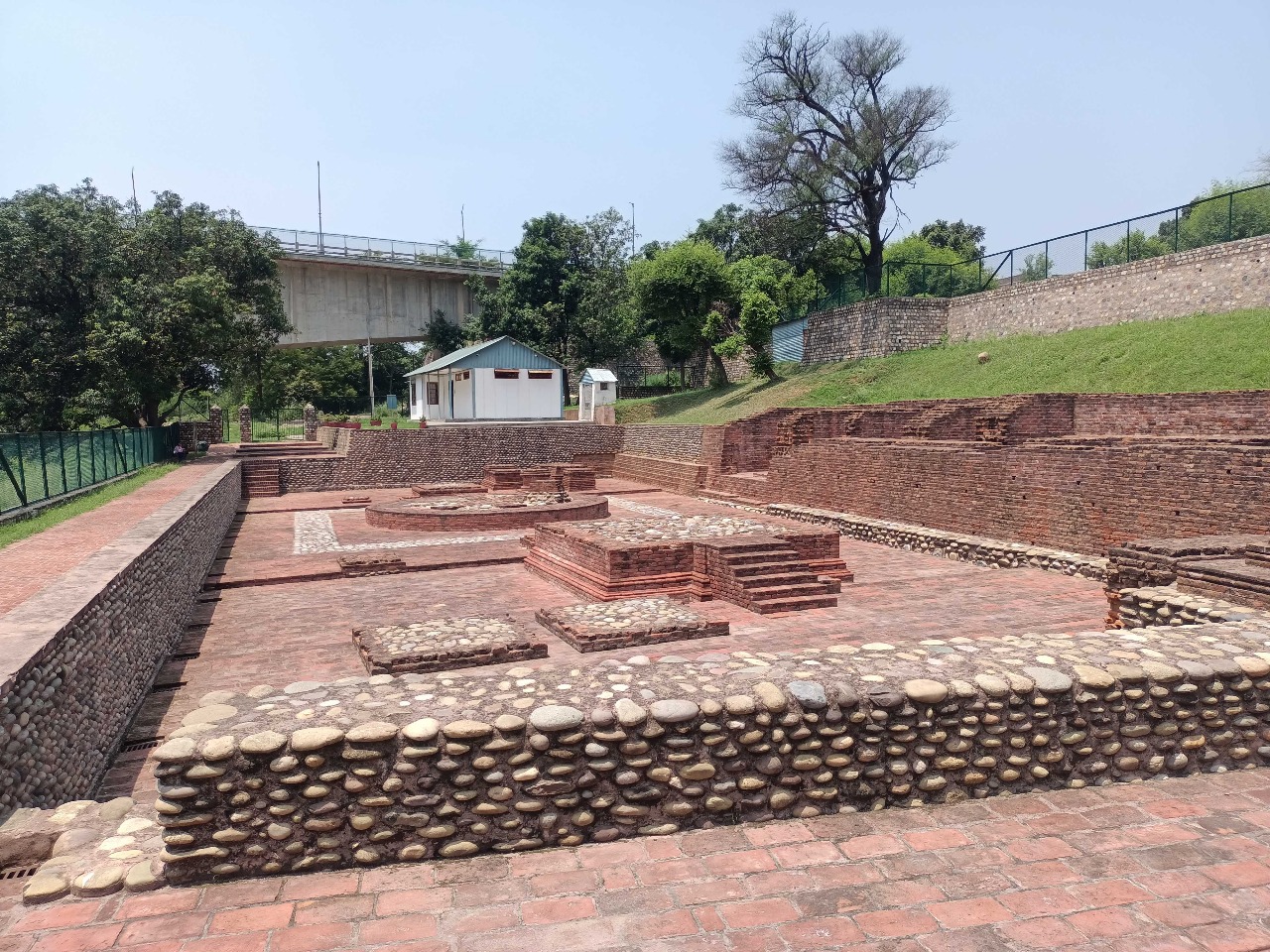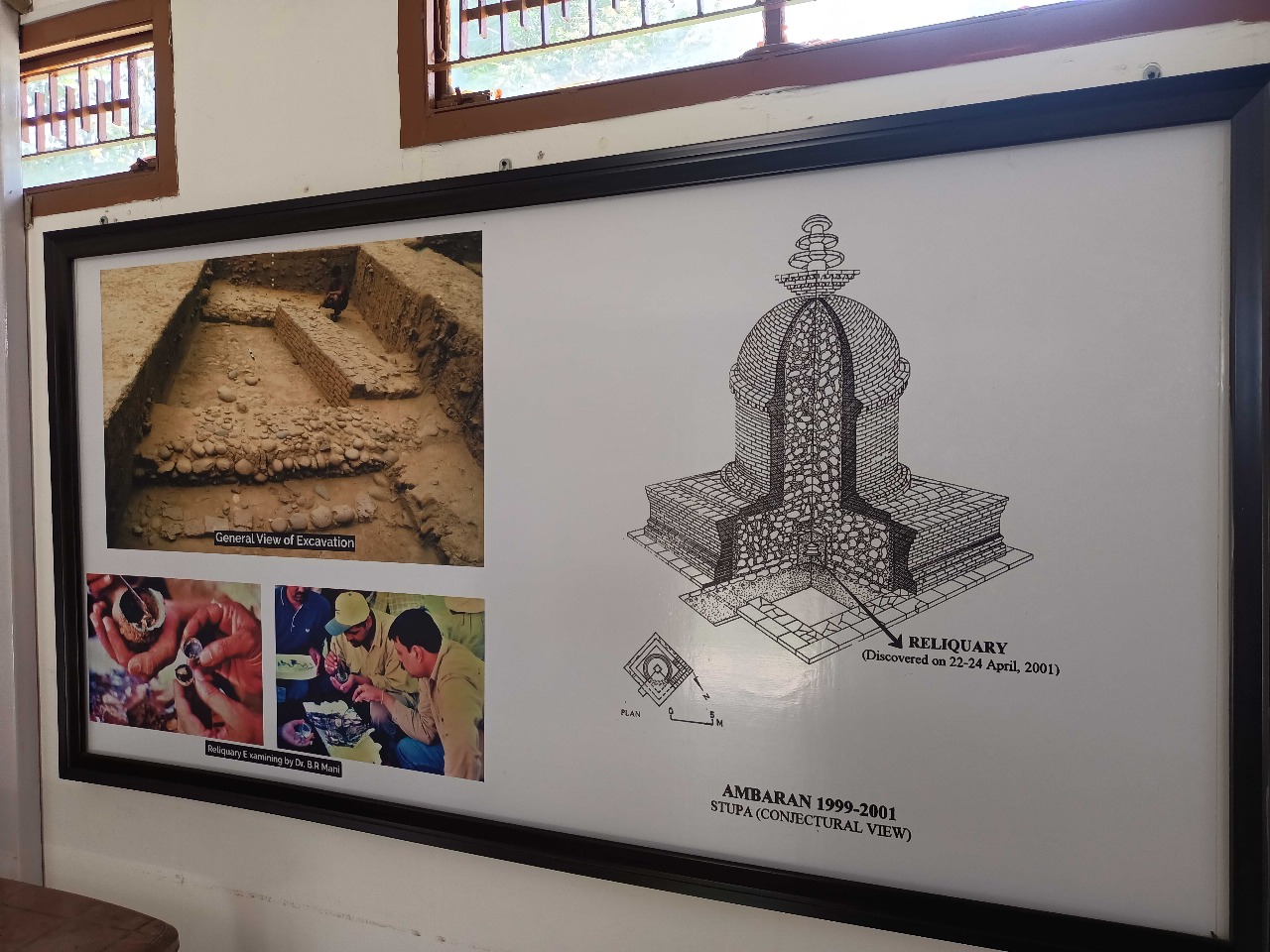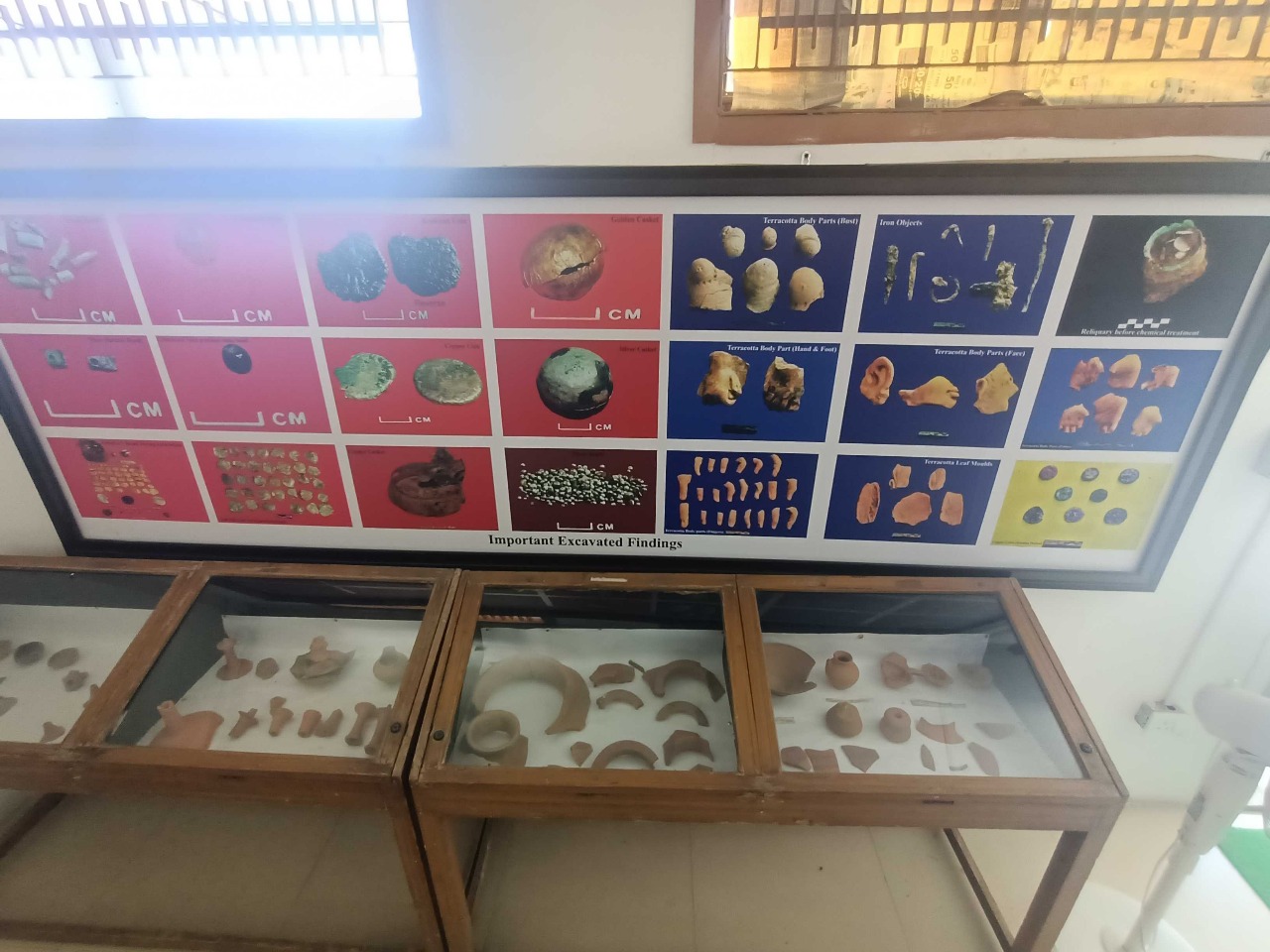Description
INTRODUCTION
Ambaran, often called "Pambaran" by locals, is a historically rich village located in the Akhnoor tehsil of Jammu district in Jammu and Kashmir, India. Situated approximately 7 km from Akhnoor and 35 km from Jammu, Ambaran is known for its ancient heritage and deep cultural roots. Founded by Amba Jagdev Pawar, a descendant of the Pawar dynasty of Dhar Ujjain, the village is named after Amba, an avatar of the goddess Durga. Its ancient significance is visible in its archaeological sites, marking it as an important center of Buddhism between the 1st century BCE and the 7th century CE. Surrounded by fertile lands and a variety of flora, Ambaran is not just a place of historical importance, but also a picturesque village where nature and history coexist harmoniously.
Adding to its historical intrigue, Ambaran is believed to be linked to the legendary Pandavas, who, according to local tradition, spent part of their agyatvasa (incognito exile) in the region, further enriching its cultural narrative. Visitors to Ambaran can witness traces of its glorious past at the site of an excavated Buddhist monastic complex, believed to have been constructed along the right bank of the river Chenab. The local fauna, from livestock to various bird species, thrives in the vicinity of this historical site, giving it a serene and natural ambiance.
POPULATION AND INFRASTRUCTURE
Total Population: 3,274
Males: 1,708
Females: 1,566
Households: 813
Sex Ratio: Approximately 917 females per 1,000 males
Literacy Rate: 69% (Male literacy: 73.07%, Female literacy: 64.56%)
Primary Occupations: Predominantly farming and teaching, with some involvement in small businesses.
Ambaran's population is deeply rooted in the land, with the community primarily engaged in farming and teaching. The flora of Ambaran, including mustard, corn, and wheat, sustains the local agricultural economy. The local fauna, such as cattle and goats, contribute to the economic activities, offering milk and other products, which are crucial to the livelihood of the village residents. These agricultural activities, combined with the flourishing nature around them, ensure a strong, self-sustaining community.
ACCESSIBILITY AND TRANSPORT
Road Connectivity: Ambaran is accessible via local and state roads, connecting it to Akhnoor and Jammu.
Public Bus Service: Available within the village.
Rail Connectivity: Closest railway station is in Srinagar.
Air Transport: Nearest airport is in Jammu, facilitating access for both domestic and international travelers.
Ambaran is well-connected to neighboring towns like Akhnoor and Jammu, offering easy access to visitors who wish to explore the village's unique combination of cultural heritage and natural beauty. The roadways pass through lush fields of corn and wheat, with occasional glimpses of native shrubs and forested patches, offering travelers an immersive experience of the region’s flora. The village’s proximity to agricultural land means that livestock, including goats and cattle, is often seen along the road, adding to the rural charm of the region.
HISTORICAL AND CULTURAL HERITAGE
Ambaran’s cultural richness is closely tied to its archaeological significance. Excavations initiated around 1990 revealed multiple periods of human settlement:
Period I: Pre-Kushan (circa 2nd-1st century BCE)
Period II: Kushan (circa 1st-3rd century CE)
Period III: Post-Kushan (Gupta) (circa 4th-5th century CE)
Period IV: Post-Gupta (circa 6th-7th century CE)
Artifacts such as terracotta figures, small sculptures, pottery, and coins from these eras provide insights into a vibrant Buddhist phase in the region. Many of these artifacts, including the notable 5th-century terracotta heads, are preserved at the Dogra Art Gallery in Jammu. The Buddhist monastic complex, located near the new Akhnoor bypass bridge, bears witness to Ambaran’s spiritual and cultural significance. The surrounding flora, including wild shrubs and agricultural fields, create a tranquil atmosphere that highlights the significance of these ancient ruins.
NOTABLE LANDMARKS AND DEITIES
Buddhist Monastic Complex: This ancient site on the Chenab riverbank symbolizes a prosperous Buddhist community that existed for several centuries.
Bua Datti Temple: Dedicated to the revered local deity Bua Datti, this temple is central to the spiritual life of Ambaran’s residents, who celebrate with a traditional jagran (all-night vigil) to honor the goddess.
The Bua Datti Temple and the Buddhist monastic complex sit amidst an environment rich in flora and fauna. The riverbank, lush with greenery, provides the perfect setting for spiritual reflection, while the surrounding fields of corn and mustard are essential to the agricultural economy. Local livestock such as goats and cattle roam the fertile lands, contributing to the rural charm and livelihood of the village’s people. Together, these elements form a peaceful backdrop for the cultural and spiritual activities at these important landmarks.
FLORA AND FAUNA
Flora:
Ambaran’s fertile agricultural land is best known for the cultivation of makki (corn), which is a staple crop in the region. Along with corn, mustard and wheat are extensively grown and form a vital part of the village’s economy. The fields are also dotted with wild shrubs and medicinal plants, many of which are used in traditional remedies. Among these are plants like turmeric, neem, and basil, which are part of the village's deep-rooted healing traditions. The village’s natural flora thrives in its temperate climate, with some areas of light forest cover, where native shrubs like mint and other local herbs are common. These plants contribute not only to the local economy but also add to the landscape’s natural beauty, making Ambaran an appealing destination for nature lovers.
Fauna:
Ambaran is home to a variety of animal life, many of which are integral to the rural lifestyle. The village’s farmlands and meadows support livestock such as cattle, goats, and poultry, essential to the local diet and economy. The nearby woodlands and fields also host several species of birds, including peacocks, eagles, and pigeons, which add a vibrant touch to the natural surroundings. Additionally, the village’s proximity to both agricultural and wild areas supports small animals such as rabbits, squirrels, and foxes, while the insect population, including a wide range of butterflies, adds to the region’s rich biodiversity. The diverse fauna reflects the village’s deep connection with its natural surroundings and agricultural traditions.
CUISINE AND FESTIVE FOODS
Ambaran's culinary heritage reflects the flavors of Jammu:
Makki Ki Roti and Sarson Da Saag: A classic winter dish made from cornmeal flatbread and spiced mustard greens.
Rajma Chawal: A signature dish of Jammu, featuring red kidney beans cooked in a thick, spiced gravy and served with rice.
Ghee and Lassi: The villagers take pride in using locally made ghee and yogurt-based lassi, both essential components of the local diet.
Kheer: A traditional rice pudding enjoyed during festivities.
The food culture in Ambaran is closely tied to its agricultural activities. With an abundance of corn and mustard, the locals prepare traditional dishes like makki ki roti and sarson da saag, which are highly popular, especially in the colder months. The availability of ghee and lassi enhances the flavors and provides essential nourishment for the hardworking farmers and villagers.
FESTIVALS AND EVENTS
Celebrations in Ambaran often revolve around the local deities and the agrarian cycle:
Bua Datti Jagran: This annual event gathers villagers in the temple, showcasing traditional music, dance, and prayers.
Harvest Festivals: The village community gathers for harvest-related festivals, embodying the spirit of gratitude and togetherness.
Festivals are an integral part of the cultural life in Ambaran, with Bua Datti Jagran being one of the most significant. These festivals often involve traditional dances and music, and are celebrated with great zeal. The harvest season is also a time of joy and thanksgiving, where the community comes together to celebrate the abundance provided by the land and the flora that sustains them.
BEST TIME TO VISIT
Spring (March to May) and autumn (September to November) are ideal for visiting Ambaran. The weather during these periods is mild, and the landscape is lush and vibrant, enhancing the experience of exploring the village’s rich historical sites and participating in local festivals. During these seasons, the surrounding fields of corn and mustard bloom, and the rich fauna can be spotted, adding to the overall experience of the village’s beauty.
EDUCATION AND HEALTHCARE
Education is provided by local primary schools, though many students travel to nearby towns for secondary and higher education. Healthcare services are basic, with a small Ayushman health center serving the immediate needs of villagers. For advanced medical care, residents rely on facilities in Akhnoor and Jammu.
CONCLUSION
Ambaran is a captivating blend of history, culture, and nature. With its roots tracing back to the ancient eras of the Kushan and Gupta periods and its deep connection to local legends like those of the Pandavas, Ambaran offers visitors a journey through time. The village's strong connection to its flora and fauna creates a vibrant environment that is as much about the land’s natural beauty as it is about its rich cultural and historical heritage. Despite its modest infrastructure, Ambaran’s cultural heritage, scenic landscape, and warm community make it a memorable destination for history enthusiasts, cultural explorers, and anyone seeking an authentic village experience in Jammu. With its agricultural landscape, diverse wildlife, and peaceful setting, Ambaran stands as a symbol of how nature and tradition continue to shape the lives of its people.
Photos
Videos
Location Map
Contact Information
| Address |
Ambaran , Akhnoor, Jammu, Jammu and Kashmir [JK], India, PIN Code: 181201 |
| Phone Number |
7006442074 |
| Website | https://villageinfo.in/jammu-&-kashmir/jammu/akhnoor/anmbaran.html |
Reviews (2)


nice
































👍👍